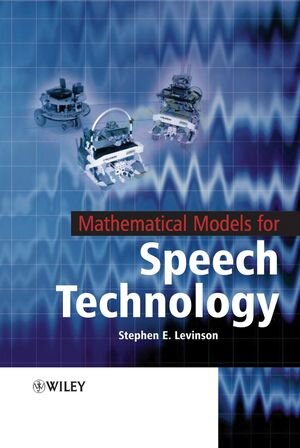
×
![Buchcover ISBN 9780470020906]()
"... a succinct presentation of the most important mathematical technology of speech technology and the author's ideas for overcoming the limitations of these techniques..." (Mathematical Reviews, 2005j)
Mathematical Models for Speech Technology
von Stephen LevinsonMathematical Models of Spoken Language presents themotivations for, intuitions behind, and basic mathematical modelsof natural spoken language communication. A comprehensive overviewis given of all aspects of the problem from the physics of speechproduction through the hierarchy of linguistic structure and endingwith some observations on language and mind.
The author comprehensively explores the argument that thesemodern technologies are actually the most extensive compilations oflinguistic knowledge available. Throughout the book, the emphasis ison placing all the material in a mathematically coherent andcomputationally tractable framework that captures linguisticstructure.
It presents material that appears nowhere else and gives aunification of formalisms and perspectives used by linguists andengineers. Its unique features include a coherent nomenclature thatemphasizes the deep connections amongst the diverse mathematicalmodels and explores the methods by means of which they capturelinguistic structure.
This contrasts with some of the superficial similaritiesdescribed in the existing literature; the historical background andorigins of the theories and models; the connections to relateddisciplines, e. g. artificial intelligence, automata theory andinformation theory; an elucidation of the current debates and theirintellectual origins; many important little-known results and someoriginal proofs of fundamental results, e. g. a geometricinterpretation of parameter estimation techniques for stochasticmodels and finally the author's own unique perspectives on thefuture of this discipline.
There is a vast literature on Speech Recognition and Synthesishowever, this book is unlike any other in the field. Although itappears to be a rapidly advancing field, the fundamentals have notchanged in decades. Most of the results are presented in journalsfrom which it is difficult to integrate and evaluate all of theserecent ideas. Some of the fundamentals have been collected intotextbooks, which give detailed descriptions of the techniques butno motivation or perspective. The linguistic texts are mostlydescriptive and pictorial, lacking the mathematical andcomputational aspects. This book strikes a useful balance bycovering a wide range of ideas in a common framework. It providesall the basic algorithms and computational techniques and ananalysis and perspective, which allows one to intelligently readthe latest literature and understand state-of-the-art techniques asthey evolve.
The author comprehensively explores the argument that thesemodern technologies are actually the most extensive compilations oflinguistic knowledge available. Throughout the book, the emphasis ison placing all the material in a mathematically coherent andcomputationally tractable framework that captures linguisticstructure.
It presents material that appears nowhere else and gives aunification of formalisms and perspectives used by linguists andengineers. Its unique features include a coherent nomenclature thatemphasizes the deep connections amongst the diverse mathematicalmodels and explores the methods by means of which they capturelinguistic structure.
This contrasts with some of the superficial similaritiesdescribed in the existing literature; the historical background andorigins of the theories and models; the connections to relateddisciplines, e. g. artificial intelligence, automata theory andinformation theory; an elucidation of the current debates and theirintellectual origins; many important little-known results and someoriginal proofs of fundamental results, e. g. a geometricinterpretation of parameter estimation techniques for stochasticmodels and finally the author's own unique perspectives on thefuture of this discipline.
There is a vast literature on Speech Recognition and Synthesishowever, this book is unlike any other in the field. Although itappears to be a rapidly advancing field, the fundamentals have notchanged in decades. Most of the results are presented in journalsfrom which it is difficult to integrate and evaluate all of theserecent ideas. Some of the fundamentals have been collected intotextbooks, which give detailed descriptions of the techniques butno motivation or perspective. The linguistic texts are mostlydescriptive and pictorial, lacking the mathematical andcomputational aspects. This book strikes a useful balance bycovering a wide range of ideas in a common framework. It providesall the basic algorithms and computational techniques and ananalysis and perspective, which allows one to intelligently readthe latest literature and understand state-of-the-art techniques asthey evolve.



